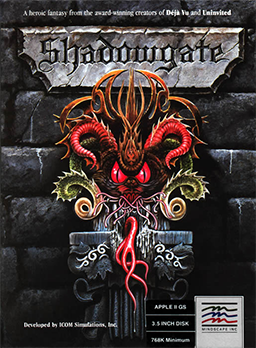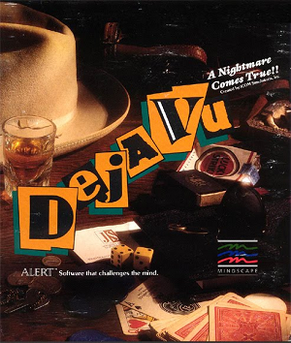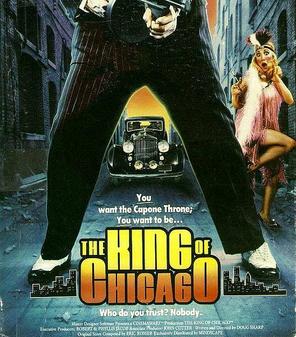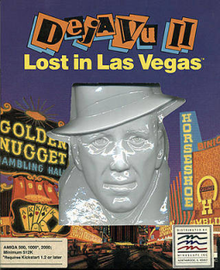
Henderson is a city in Clark County, Nevada, United States, about 16 miles (26 km) southeast of downtown Las Vegas. It is the 2nd most populous city in Nevada, after Las Vegas, with an estimated population of 320,189 in 2019. The city is part of the Las Vegas Valley. Henderson occupies the southeastern end of the valley, at an elevation of 1,864 feet (568 m).

Frank Lawrence Rosenthal, also known as "Lefty" Rosenthal, was an American professional sports gambler, Las Vegas casino executive, and organized crime associate. Rosenthal, who was once called "the greatest living expert on sports gambling" by Sports Illustrated, is credited with bringing increased exposure to sports betting to Las Vegas in the 1970s.

Driver is an action driving video game and the first installment in the Driver series. Developed by Reflections Interactive and published by GT Interactive, it was released on the PlayStation on 25 June 1999. The game, inspired by movie car chases, sees players driving around four real-life cities – Miami, San Francisco, Los Angeles and New York – using a variety of vehicles, with the plot focusing on the work of an undercover police officer, John Tanner, who infiltrates a criminal outfit to investigate their operations, only to discover a plot by their boss to assassinate the President of the United States.

Shadowgate is a black-and-white point-and-click adventure game published for the Macintosh as part of the MacVenture series. The game is named for its setting, Castle Shadowgate, residence of the evil Warlock Lord. The player, as the "last of a great line of hero-kings" is charged with the task of saving the world by defeating the Warlock Lord, who is attempting to summon up the demon Behemoth out of Hell. Later that year, a color version of the game was released for the Amiga and Atari ST, and in 1989 for the Nintendo Entertainment System.

Alone in the Dark: The New Nightmare is a survival horror video game and the fourth installment and first reboot of the video game series Alone in the Dark, developed by Darkworks and published by Infogrames Entertainment, SA. The game was released in 2001 on several platforms including Microsoft Windows, PlayStation, Dreamcast, and Game Boy Color. A PlayStation 2 version of the game was also released several months after and only in Europe. The prequel comic Alone in the Dark: Life Is a Hideous Thing was published in France by Semic comics in 2001 and was released in English in September 2002.

Softporn Adventure is a comedic, adult-oriented text adventure game produced for the Apple II in 1981. The game was created by Charles Benton and released by On-Line Systems, later renamed Sierra On-Line. Years later, Softporn Adventure was remade and expanded as Leisure Suit Larry series of adult-oriented video games, and the first entry in that series, 1987's Leisure Suit Larry in the Land of the Lounge Lizards, was a nearly direct graphical adaptation of Softporn Adventure. Another graphical version was released as Las Vegas for various Japanese computers in 1986 by Starcraft.

Uninvited is a black-and-white horror-themed point-and-click adventure game. It was originally developed for the Macintosh by ICOM Simulations released in 1986 by Mindscape as part of the MacVenture series.

Déjà Vu is a point-and-click adventure game set in the world of 1940s hardboiled detective novels and films. It was released in 1985 for Macintosh – the first in the MacVenture series – and later ported to several other systems, including the Amiga. Initially, the game featured black and white graphics, and later releases introduced color.

Reach for the Stars is a science fiction strategy video game. It is the earliest known commercially published example of the 4X genre. It was written by Roger Keating and Ian Trout of SSG of Australia and published in 1983 for the Commodore 64 and then the Apple II in 1985. Versions for Mac OS, Amiga, Apple IIGS, and DOS were released in 1988.

The King of Chicago is a 1986 action-adventure video game by Doug Sharp. Based on numerous Hollywood mobster movies, this game is set in the 1930s, but some sequences towards the end of the game take place in 1986. The Macintosh version of the game is animated using claymation, while other versions utilize drawn graphics.

Wizardry: Proving Grounds of the Mad Overlord is the first game in the Wizardry series of role-playing video games. It was developed by Andrew Greenberg and Robert Woodhead. In 1980, Norman Sirotek formed Sir-Tech Software, Inc. and launched a beta version of the product at the 1980 Boston Computer Convention. The final version of the game was released in 1981.

BattleTanx is a 1998 action game released for the Nintendo 64, produced by The 3DO Company. The game was followed by a 1999 sequel, titled BattleTanx: Global Assault.

Tass Times in Tonetown is an adventure game published by Activision in 1986. It was designed by Michael Berlyn and Muffy McClung Berlyn and programmed by Rebecca Heineman of Interplay in cooperation with Brainwave Creations.
MacVenture is a series of four adventure games with a menu-based point-and-click interface. They were originally developed for the Macintosh by ICOM Simulations:
- Déjà Vu (1985)
- Uninvited (1986)
- Shadowgate (1987)
- Deja Vu II: Lost in Las Vegas (1988)

"Déjà Vu" is a song by American singer Beyoncé, featuring rapper Jay-Z. It was produced by Rodney "Darkchild" Jerkins, 808-Ray and Beyoncé for her second solo album, B'Day (2006). "Déjà Vu" is an R&B song, which incorporates elements of 1970s funk and soul music. Its music is largely based on live instrumentation, including bass guitar, hi-hat and horns, except the Roland TR-808 drum machine, which is a non-live instrument. The song's title and lyrics refer to a woman being constantly reminded of a past lover.

Police Quest II: The Vengeance is a 1988 police procedural adventure video game developed and published by Jim Walls and Sierra On-Line. It is the second installment in the Police Quest series. The game continues the story of police officer Sonny Bonds as he attempts to apprehend an escaped convict.

Mark M. Davis is an American businessman and sports franchise owner. He is the controlling owner and managing general partner of the Las Vegas Raiders of the National Football League (NFL) and the owner of the Las Vegas Aces of the Women's National Basketball Association (WNBA). His father, Al, was the principal owner of the Raiders from 1972 until his death in 2011. Upon his father's death, Davis and his mother, Carol, inherited ownership of the Raiders, with Davis taking over as operating head of the franchise. As of February 2023, his estimated net worth was $1.9 billion.

Gangstar Vegas is an open world action-adventure video game developed by Gameloft Montreal and published by Gameloft. It was released for Android and iOS on June 7, 2013. It is the sixth installment in the Gangstar series; it is preceded by Gangstar Rio: City of Saints and succeeded by Gangstar: New Orleans.
The 2022 Las Vegas Aces season was the franchise's 26th season in the Women's National Basketball Association and the 5th year the franchise is based in Las Vegas - after relocating from San Antonio and Utah. The regular season began on May 6, 2022, at the Phoenix Mercury.


















